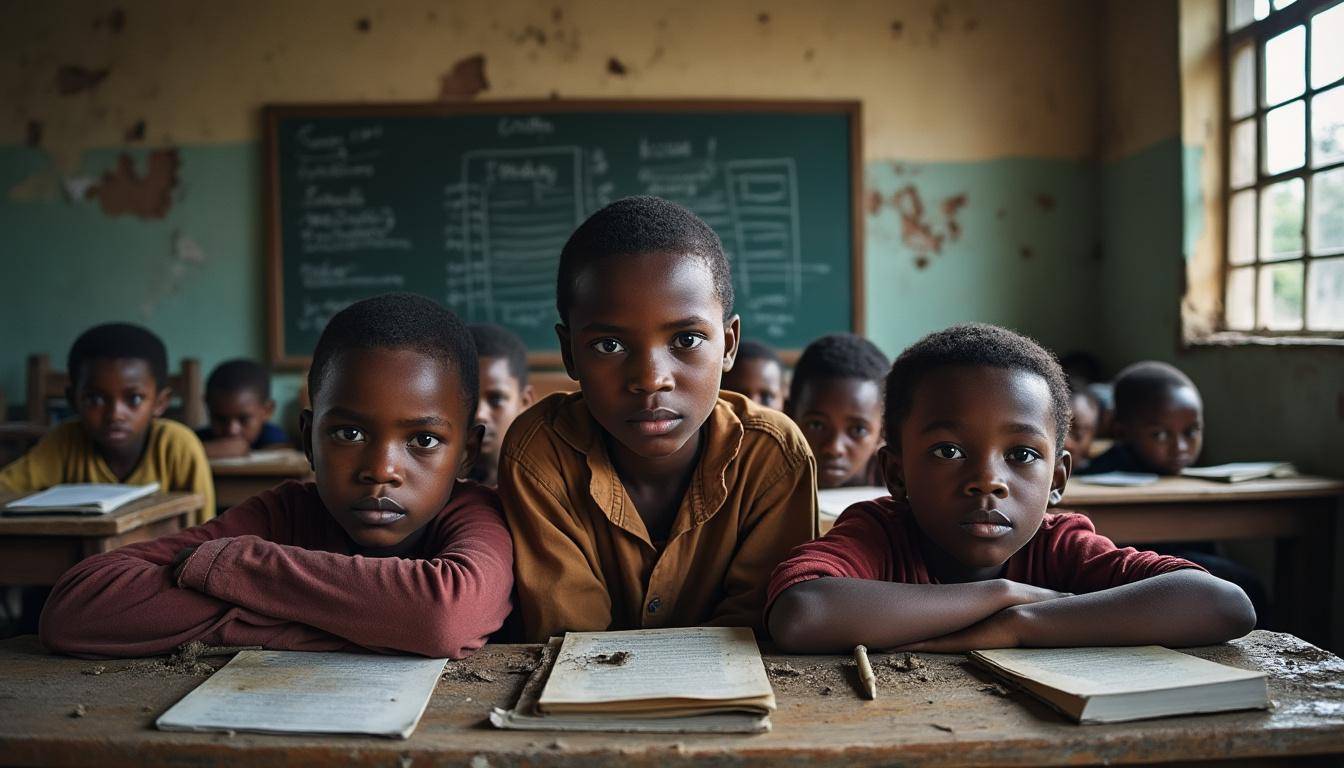Recent significant reductions in UK overseas aid threaten to reverse vital progress in children’s education and health across several African nations. Despite commitments to multilateral agencies and humanitarian efforts, the government’s own impact assessment reveals alarming consequences, including closing education programs affecting over 170,000 children and rising risks of preventable diseases and mortality. These cuts coincide with broader global aid reductions, intensifying challenges for vulnerable populations.
How UK Aid Cuts Undermine Children’s Education in Africa
The decision to reduce the UK’s Overseas Development Assistance (ODA) budget from 0.5% to 0.3% of national income has triggered a ripple effect across multiple sectors in African countries, particularly jeopardizing children’s education. Several bilateral projects targeting education are facing significant cuts, with direct consequences for vulnerable groups such as girls and children with disabilities.
Examples of impacted programs include:
- The early closure of a girls’ education program in the Democratic Republic of Congo (DRC) which supports 170,000 children in the conflict-affected Kasai region.
- Reduced funding for education in Ethiopia, Sierra Leone, Nigeria, and Zimbabwe that threatens gains in school attendance and learning outcomes.
- Disproportionate impacts on children with disabilities and the most vulnerable who depend heavily on dedicated educational support services.
Notably, many of the affected programs have a strong focus on equality, amplifying the risk that marginalized children will face increased educational barriers.
The Role of Global Partners in Mitigating Education Losses
Despite UK governmental cuts, international organizations remain committed to supporting education worldwide. Agencies such as UNICEF, Save the Children, World Vision, and the Global Partnership for Education continue their efforts to fill gaps, focusing on inclusive, gender-sensitive education initiatives. However, shrinking funding challenges their capacity to scale programs effectively.
- Save the Children advocates for sustaining funding to protect education during crises.
- UNICEF prioritizes early childhood education and school readiness in affected zones.
- Plan International emphasizes girls’ education to combat systemic inequality.
Without sufficient UK support, these organizations face growing obstacles to maintain necessary programs, putting millions of children at risk of falling behind.
Increased Risk of Disease and Mortality Linked to Aid Reductions
The aid cuts not only diminish educational support but also critically reduce funding for health services, particularly targeting maternal and child healthcare in countries like the Democratic Republic of Congo, Mozambique, Zimbabwe, and Ethiopia. The government’s impact assessment underscores that such reductions heighten the burden of preventable diseases and increase mortality rates, especially among impoverished women, children, and people with disabilities.
- Funding cuts to the Ending Preventable Deaths program force the prioritization and scaling back of interventions across 11 countries.
- Reductions in women’s health and health systems strengthening weaken emergency responses and routine care.
- Decreased support affects immunization campaigns crucial for controlling diseases that disproportionately impact children.
These setbacks have the potential to reverse decades of global health progress, directly undermining the wellbeing and survival chances of vulnerable populations.
Key Humanitarian Organizations Responding to Health Crises
Non-governmental organizations such as Oxfam, Care International, International Rescue Committee, Mercy Corps, and ChildFund are frontline actors working to mitigate the health impacts of these aid reductions. Their roles include:
- Oxfam provides essential water and sanitation services to prevent disease outbreaks.
- Care International delivers maternal health support in remote communities.
- International Rescue Committee focuses on emergency health responses in conflict zones.
- Mercy Corps supports nutrition programs combating child malnutrition.
- ChildFund implements child protection and health education initiatives.
Nonetheless, these organizations face fundraising challenges as government aid diminishes, threatening their ability to sustain long-term health and education programs.
Strategic Shifts and Global Perspectives on Development Aid
The UK government frames these aid budget reductions as part of a “modernization” approach, shifting from traditional donor-recipient relationships towards partnerships and investment models. Development Minister Jenny Chapman emphasizes value for taxpayers and a focus on strategic priorities. Yet critics argue this shift risks sidelining the most vulnerable populations amid tightening fiscal constraints.
Globally, the UK’s budget cuts align with similar moves by other donor nations, such as the Trump administration’s deep cuts to US aid, which disrupted HIV treatment programs in sub-Saharan Africa. This convergence of funding reductions threatens the stability of initiatives crucial to health and education progress worldwide.
- The original 0.7% ODA target, widely supported across UK parties, was reduced to 0.5% during the Covid pandemic and now further down to 0.3%.
- International actors urge governments to integrate equity and crisis response at the heart of aid strategies.
- Calls grow for continuous assessments tracking the real-world impact of budget cuts beyond 2025.


